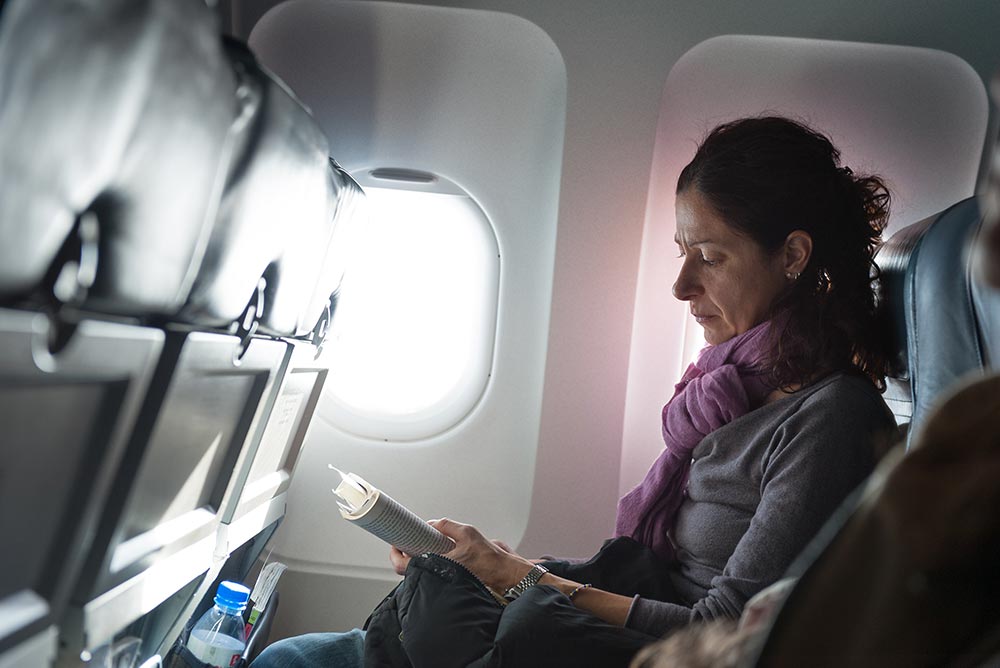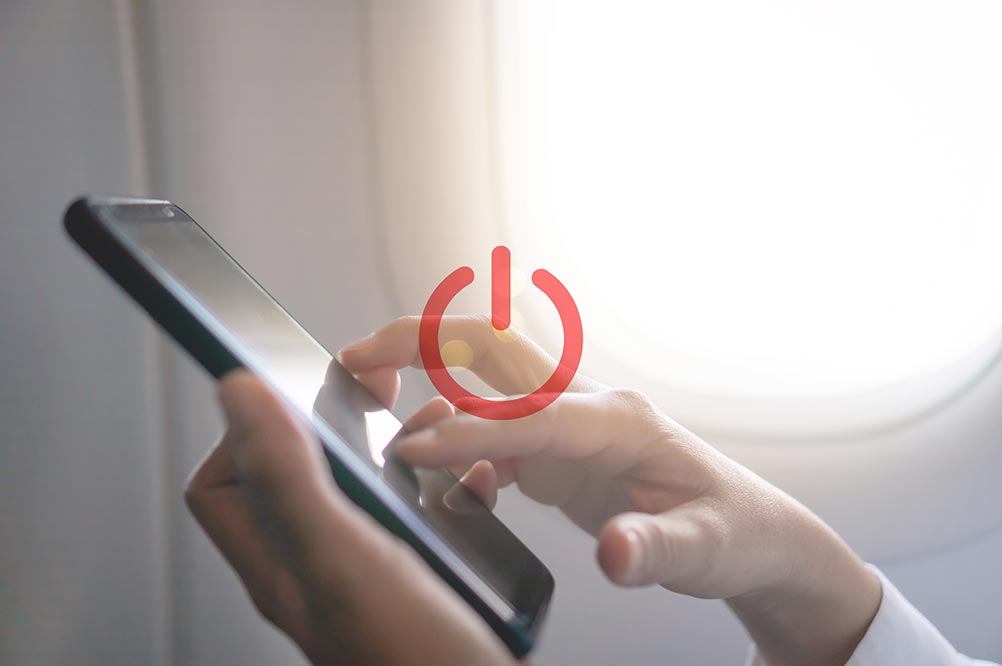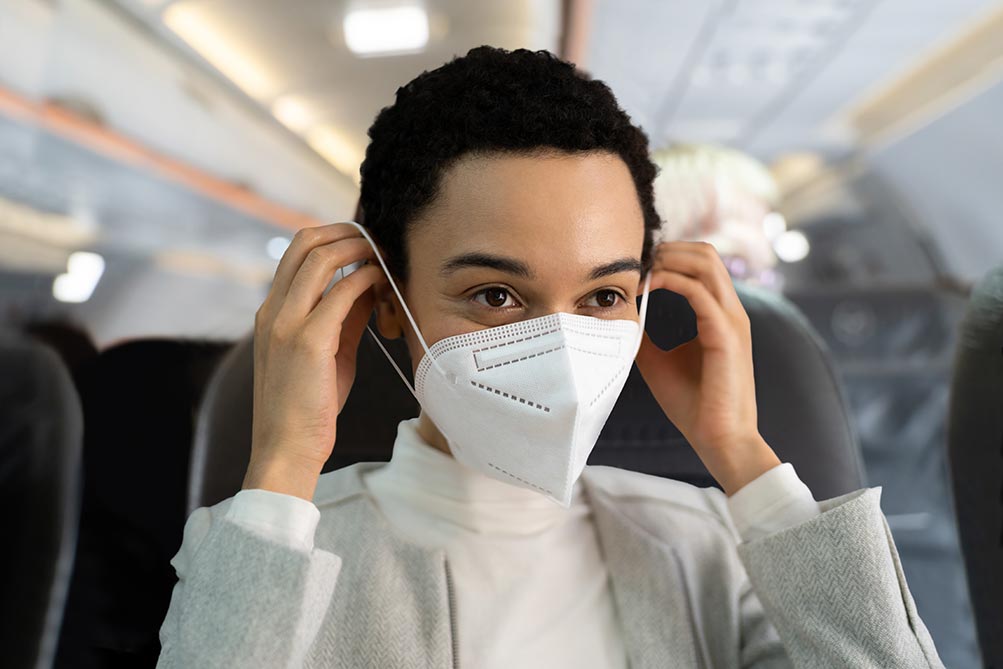Not enough legroom. People constantly moving over you. Turbulence, noise from movies, video games and screaming children. Let’s face it, a plane is not an easy place to get some rest, unless you’re flying first class or are the lucky few who have the power to knock out anywhere. Missing out on much-needed sleep often leads to exhaustion and jet lag when you reach your destination. As someone who takes her sleep schedule very seriously and hates being jet-lagged, I’ve acquired some tips and tricks that I use. Here are some travel-tested tips for sleeping on planes.
#1 Choose the right seat and flight

Book a seat according to the side you normally sleep on. If you can, book a window seat, as you can rest your head against the window for support. Seats closer to the exit rows provide legroom for extra comfort. Choose a flight with a departure time that’s closer to your bed time.
#2 Alter your sleep schedule before the flight

According to experts it takes roughly 24 hours for our biological clocks to shift by one hour. Use this rule of thumb to slowly adjust your sleep time closer to your final destination. Adding light in the evening will keep us awake and delay our clocks, while removing light will let allow us to sleep earlier.
#3 Think physical before the flight

Exercise is the answer to everything. A good workout, resistance training in particular not only helps you fall asleep but promotes undisturbed sleep
#4 Follow your normal bedtime routine before the flight

Right before your flight, follow activities that you normally would before sleeping – do not dress up for the flight, dress down, wear comfortable lounge pants, read a book, follow your normal skin care routine, even brushing your teeth helps.
#5 Cut down on your carry-ons

As Indians, we worry about our things, even if it’s on a flight, if you have many carry-ons this will lead you to worry about them getting misplaced. Full-sized carry-ons also limits space and legroom and making it harder to sleep. Pack lighter so you can fit everything into a single bag. Keep a few small necessities near the top of the bag — a book or magazine, a snack, a bottle of water. Before you stow your bag in the overhead compartment, pull out the important items that you’ll need during the flight and put them in the back of the seat in front of you.
#6 Stay at the right temperature

The best bedroom temperature for optimal sleep is between 18°C - 20°C, while cabins are generally kept between 23°C - 25°C. Temperatures fluctuate in different zones of the cabin and during take-offs and landings. Dress in light, easily removable layers. Try a cooling cap to create a sleep-ready environment.
#7 Switch off and unplug

If you’ve always wanted to try a digital detox, flights are the best place for it. Unplug your phones, tablets, and mobile devices, don’t just put them on air plane mode, switch-off the devices. Studies suggest that the blue light emitted by phone screens shifts your circadian rhythms and suppresse melatonin — the hormone responsible for your sleep-wake cycles.
#8 Carry the correct apparatus

Wear a light-blocking eye mask. Wear noise-cancelling headphones or earplugs and listen to pink noise - Think beach waves, steady rainfall, and rustling leaves. Add a pillow to the lower seatback, roper lumbar support can improve comfort and reduce back pain from long flights. Always carry a neck pillow, a U-shaped pillow wrapped around the head supports the chin and restricts unwanted head movements, leading to less discomfort during sleep.
#9 Keep your body nourished

Contrary to popular belief alcohol and caffeine isn’t the answer to a comfortable flight, you will land at your destination feeling dehydrated and groggy, amplifying the dreaded jet lag. Airplane cabins usually have less than 20 per cent humidity, this can dry up your nasal passages and make it difficult to catch some sleep. Use nose drops to keep your nasal passages hydrated. Try steam inhalation from a cup of hot tea or water. Drink 250 ml of water for each hour you’re in the air to combat the dry air. Avoid heavy foods right before a flight, much on potassium-high snacks like bananas, oranges, cantaloupe, apricots, grapefruit, and some dried fruits, such as prunes, raisins, and dates. This helps regulate blood pressure and induce some sleep.
#10 Pick a comfortable mask

It’s the new normal and something you can’t fly without these days: a face mask. Pick the right material, make sure it’s adjustable and comfortable for the duration of your trip. Make sure you properly secure your face mask before dozing off, so flight attendants don’t have to wake you up to ask you to adjust it.